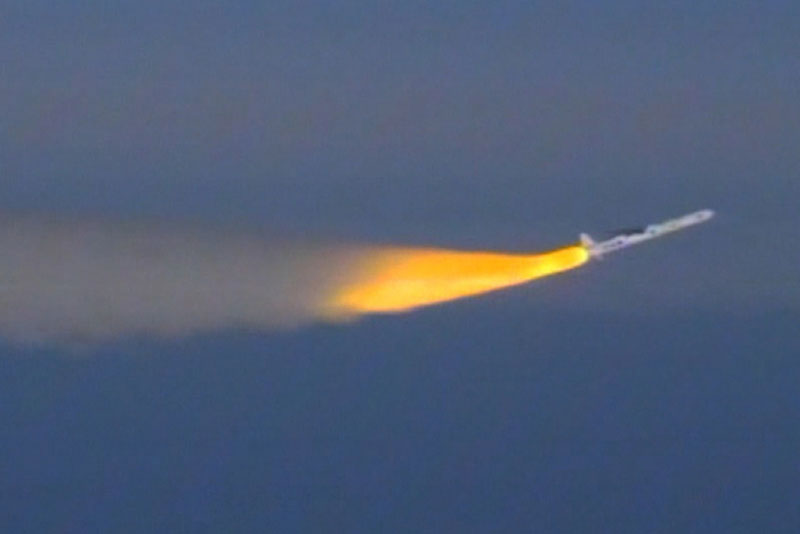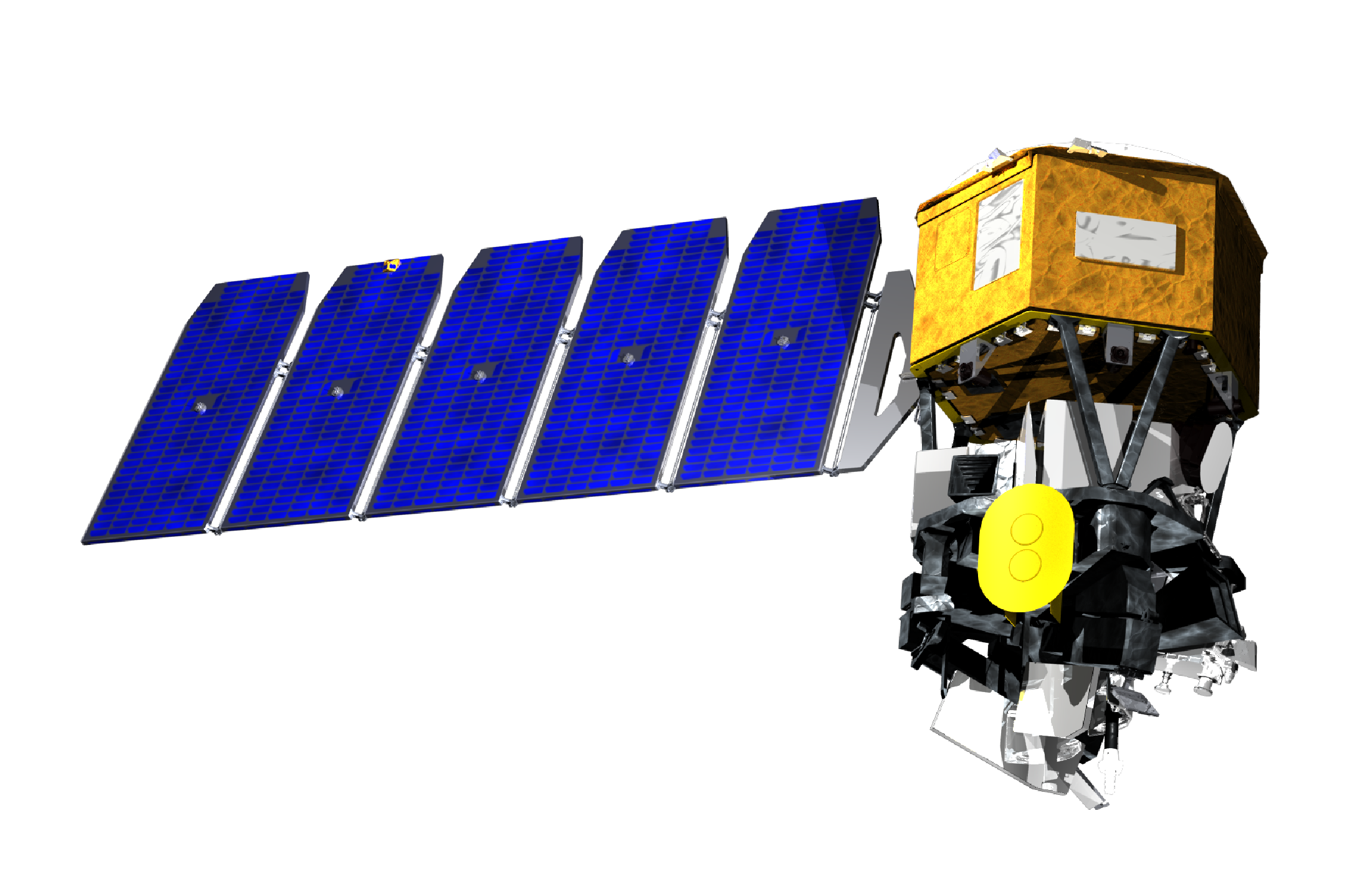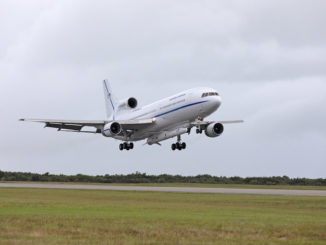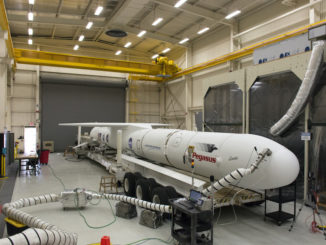
NASA has selected an Orbital Sciences Corp. air-launched Pegasus XL rocket to place a small research satellite in orbit in 2017 to study the connection between Earth’s weather and space weather, the space agency announced Thursday.
The Ionospheric Connection Explorer, or ICON, mission will orbit 360 miles above Earth to investigate the boundary region between space and the atmosphere, a region subject to variability in charged particles that can disrupt radio transmissions and GPS navigation signals.
A Pegasus XL rocket dropped from the belly of an L-1011 carrier airplane will launch the ICON spacecraft in June 2017. The aircraft will take off from the U.S. Army’s Reagan Test Site at Kwajalein Atoll in the Marshall Islands, then fly to a predetermined location over the Pacific Ocean to deploy the three-stage Pegasus rocket.
NASA said the firm-fixed price launch services agreement is worth approximately $56.3 million. The figure includes spacecraft processing, payload integration, tracking, data and telemetry and other launch support requirements.
Orbital’s winged Pegasus launcher has flown 42 times since 1990, including a string of 28 successful flights in a row. The rocket’s last flight was in June 2013, and with ICON’s assignment, there are two Pegasus launches on the manifest in 2016 and 2017.
The refrigerator-sized satellite will weigh nearly 600 pounds fueled for launch. Orbital Sciences is also manufacturing the spacecraft, which is based on the company’s LEOStar 2 satellite bus.
The mission has a cost cap of $200 million, excluding launch costs.

New discoveries show terrestrial weather systems — such as storms and disturbances in the lower atmosphere — can affect activity higher up. Scientists previously thought fluctuations in the ionosphere, a layer of charged particles between 60 and 600 miles in altitude, were primarily driven by the sun, according to NASA.
“ICON addresses a national need to predict these kinds of disturbed conditions in space,” said Thomas Immel, principal investigator for ICON at the University of California at Berkeley. “These disturbances can cause radio communication to suddenly and unexpectedly drop out, which is a problem for ships, airplanes, the global positioning system, and the military.”
The ICON spacecraft hosts four science instruments to measure the movements and temperatures of neutral particles, the thickness of the ionosphere, the composition of the atmosphere, and electric fields around the satellite.
ICON is managed by NASA’s Explorers program under the agency’s heliophysics division.
“For years people thought that energy coming in from above, through the solar wind or solar ultraviolet radiation, was the only cause of changes in the upper atmosphere,” said Doug Rowland, mission scientist for ICON at NASA’s Goddard Space Flight Center in Greenbelt, Md. “But we now realize that atmospheric movements down below, closer to Earth, actually have a strong effect on what’s happening above.”
Diurnal and seasonal variations in the strength of the ionosphere indicate a linkage with what is happening in the lower atmosphere. Data collected by the two-year ICON mission could help forecasters better predict space weather in the future.
“Since 2000, we have seen more, very clear evidence that our previous theories about a solar-driven ionosphere does not match reality,” Immel said. “Instead, the structure of the ionosphere changes with weather and with the seasons. There must be another driver of these disturbances besides the sun, and whatever it is, it’s large and controlling.”
Follow Stephen Clark on Twitter: @StephenClark1.



